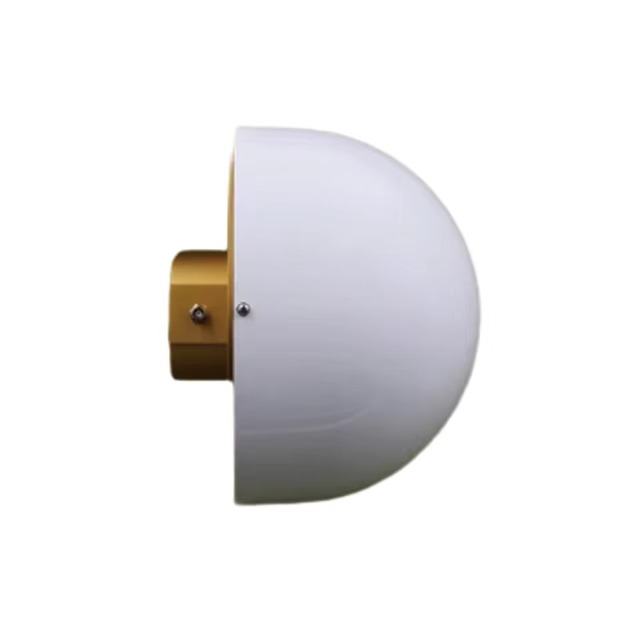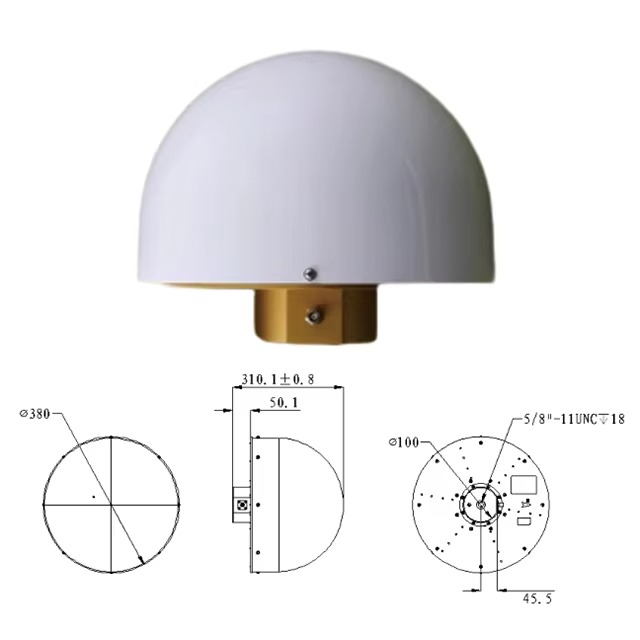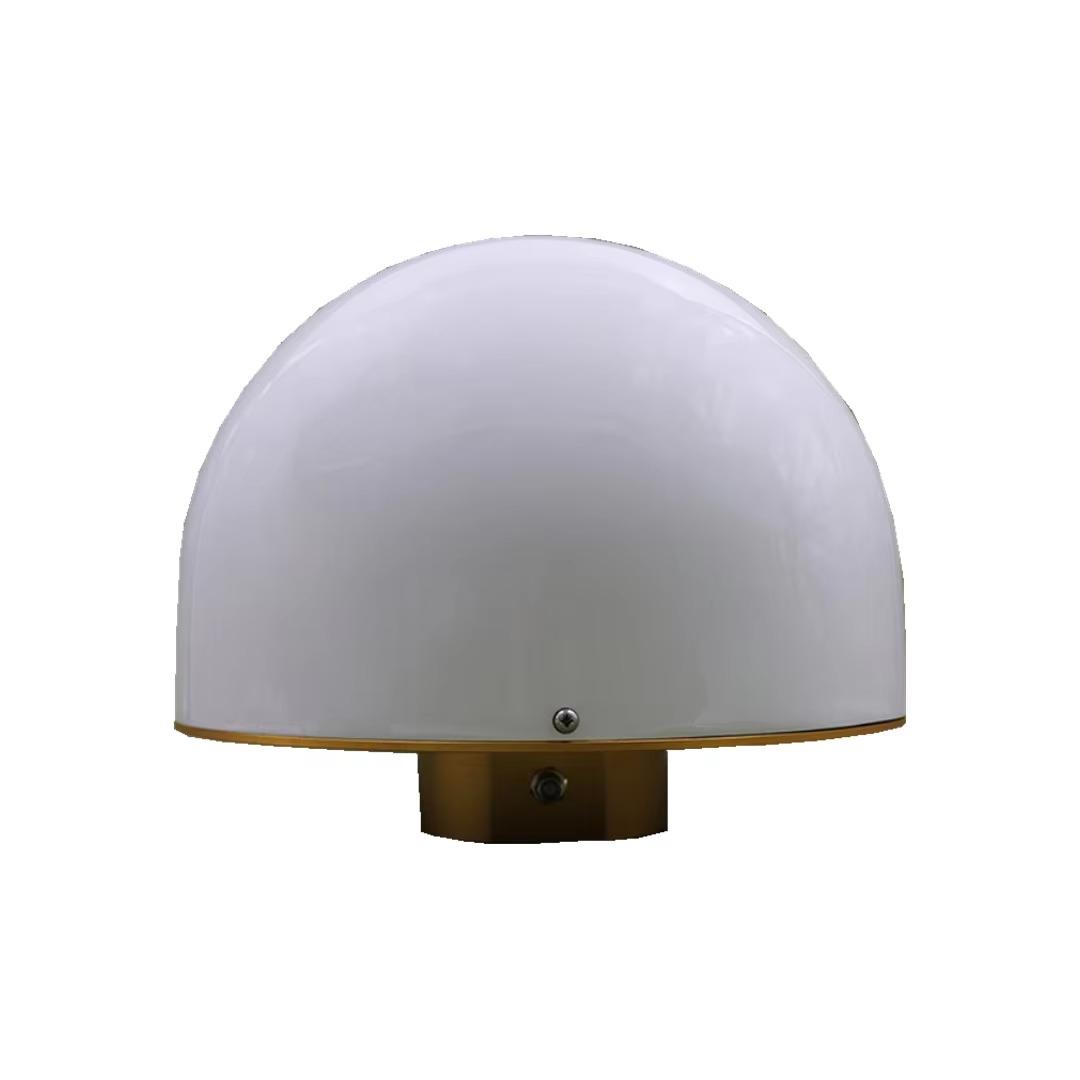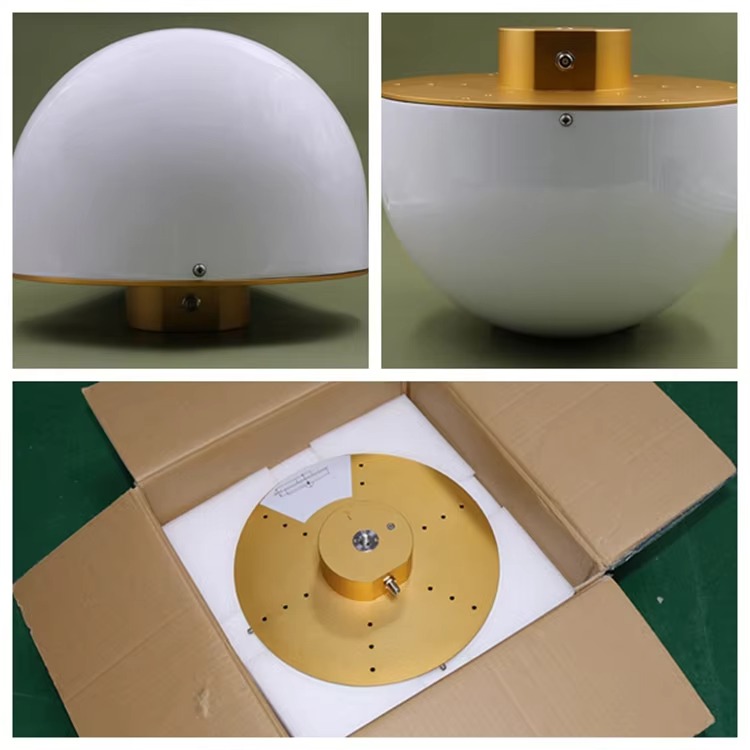The RTK choke ring antenna’s ability to deliver high-precision, reliable GNSS data has made it indispensable across a wide range of industries, while emerging technologies and market demands are driving exciting future trends in its design and functionality.
Key Applications
Geodetic Surveying and Mapping: Geodetic surveying requires the highest level of positioning accuracy (often sub-centimeter) to map large-scale land areas, establish property boundaries, and monitor tectonic plate movement. RTK reference stations equipped with choke ring antennas serve as fixed benchmarks, providing correction data to roving survey receivers. For example, in cadastral surveying (defining land ownership), the antenna’s multipath mitigation ensures that boundary measurements are precise enough to avoid legal disputes. In tectonic monitoring, reference stations use choke ring antennas to track subtle changes in terrain (e.g., 1–2 cm per year) that signal earthquake risks—data critical for geological research and early warning systems.
Infrastructure Construction and Maintenance: The construction of large-scale infrastructure (bridges, tunnels, highways, high-rise buildings) demands precise alignment to meet safety standards and design specifications. RTK reference stations with choke ring antennas provide real-time correction data to construction equipment (e.g., excavators, bulldozers, laser scrapers), ensuring that structures are built according to plans. For example, when building a bridge, the antenna’s accuracy ensures that piers are placed within millimeters of their intended positions, preventing structural weaknesses. After construction, reference stations continue to monitor infrastructure for signs of deformation (e.g., settling or shifting), with the choke ring antenna’s stability enabling long-term, reliable data collection.
Autonomous Vehicles and Intelligent Transportation Systems (ITS): Autonomous vehicles (AVs) require centimeter-level positioning to navigate safely, especially in urban environments where GPS signals may be blocked or distorted. RTK reference station networks—powered by choke ring antennas—provide the correction data needed for AVs to maintain accurate location estimates. For example, in a city-wide ITS, reference stations with choke ring antennas transmit correction data to AVs via cellular networks, enabling them to avoid obstacles, stay in lanes, and navigate intersections. The antenna’s multipath mitigation is critical here, as urban environments are filled with reflective surfaces (buildings, cars, signs) that would otherwise degrade signal quality.
Agriculture (Precision Farming): Precision farming uses high-precision positioning to optimize crop yields, reduce resource waste, and minimize environmental impact. RTK reference stations with choke ring antennas provide correction data to farm equipment (e.g., self-driving tractors, harvesters, and drones) to enable precise operations like row planting, variable-rate fertilization, and targeted pesticide application. For instance, a self-driving tractor equipped with an RTK receiver can use correction data from a choke ring antenna-equipped reference station to plant seeds in straight rows with centimeter-level spacing—maximizing sunlight exposure and reducing competition for nutrients. In drone-based crop monitoring, the antenna’s accuracy ensures that drones capture images of specific crop plots repeatedly, allowing farmers to track growth patterns and detect stress (e.g., drought or pest infestations) early. This level of precision not only boosts crop yields but also reduces the overuse of fertilizers and pesticides, supporting sustainable agriculture practices.
Environmental Monitoring: RTK choke ring antennas play a vital role in long-term environmental monitoring projects, where subtle changes in terrain or water levels must be tracked with high accuracy. For example, in glacier monitoring, reference stations with choke ring antennas measure the retreat or advance of glaciers at rates as small as a few millimeters per year—data that helps scientists understand climate change impacts. In coastal areas, these antennas monitor sea-level rise and land subsidence, providing early warnings for communities at risk of flooding. The antenna’s stability is critical here, as monitoring projects often span decades; any drift in the antenna’s performance would compromise the integrity of the collected data.
Future Trends
Miniaturization and Weight Reduction: Addressing the challenge of size and weight is a top priority for manufacturers. Recent advances in materials science—such as the use of lightweight, high-strength composites (e.g., carbon fiber-reinforced polymers) for the choke ring and housing—are enabling the development of smaller, lighter antennas. For example, prototype choke ring antennas with diameters of 20–25 cm and weights under 1 kg have been tested, maintaining the same multipath mitigation performance as larger models. This miniaturization will simplify installation, reduce logistics costs, and expand the antenna’s use in applications where space is limited (e.g., small unmanned aerial vehicles (UAVs) used for surveying).
Integration with 5G and IoT: The rise of 5G networks and the Internet of Things (IoT) is transforming reference station operations. Future RTK choke ring antennas will likely integrate 5G modules, enabling faster transmission of correction data to roving receivers—critical for time-sensitive applications like autonomous driving. Additionally, IoT sensors (e.g., temperature, humidity, and wind sensors) will be embedded in the antenna’s housing, allowing real-time monitoring of environmental conditions that could affect performance. For example, if a reference station is exposed to extreme winds, the IoT sensors can alert operators to check the antenna’s alignment, preventing positioning errors.
Advanced Signal Processing and AI Integration: While the choke ring provides hardware-level multipath mitigation, future antennas will combine this with advanced software and artificial intelligence (AI) to address high-angle multipath and other complex interference. AI algorithms will analyze signal patterns in real time, identifying and filtering out distorted signals that the choke ring cannot block. For example, machine learning models trained on thousands of signal samples can distinguish between direct signals and high-angle multipath, further improving positioning accuracy. Additionally, AI will enable predictive maintenance—analyzing data from the antenna’s sensors to predict component failures (e.g., LNA degradation) before they occur, reducing downtime for reference stations.
Compatibility with Next-Generation GNSS Systems: As next-generation GNSS systems (e.g., GPS III, Galileo Second Generation, and BeiDou-3) become fully operational, RTK choke ring antennas will be updated to support their new frequency bands and features. For example, GPS III introduces the L1C band, which offers better signal quality and resistance to interference; future antennas will include patch elements tuned to L1C, ensuring compatibility with the latest satellites. This will further enhance the antenna’s performance, especially in challenging environments like urban canyons or areas with high electromagnetic interference.
Conclusion
The RTK choke ring antenna has established itself as an indispensable technology in the global GNSS ecosystem, serving as the backbone of high-precision reference stations that enable a wide range of critical applications—from geodetic surveying and infrastructure construction to autonomous driving and environmental monitoring. Its unique design, centered on the choke ring structure, addresses the primary challenge of multipath interference, delivering the centimeter-level accuracy and long-term stability that industries demand.
Throughout this series, we have explored the antenna’s core attributes: its role as a precision tool in reference stations (Overview), the meticulous engineering of its components (Design and Construction), the synergy of hardware and signal processing that drives its performance (Working Principles), the balance of advantages (superior multipath mitigation, durability, multi-constellation support) and challenges (size, cost, installation sensitivity) that shape its use (Advantages and Challenges), and the diverse applications and innovative trends that will define its future (Applications and Future Trends). Together, these elements highlight why the RTK choke ring antenna is not just a component, but a catalyst for progress in industries that rely on accurate positioning.
Looking ahead, the future of the RTK choke ring antenna is marked by innovation aimed at overcoming its current limitations and leveraging emerging technologies. Miniaturization will make it more versatile, integration with 5G and IoT will enhance its connectivity and operational efficiency, and AI-driven signal processing will further improve its accuracy. As next-generation GNSS systems roll out, the antenna will evolve to support new frequencies and features, ensuring it remains at the forefront of high-precision positioning.
For industries and organizations, the RTK choke ring antenna represents a strategic investment in reliability and precision. While its initial cost and installation requirements may be higher than standard antennas, the long-term benefits—reduced errors, minimal maintenance, and compatibility with evolving technologies—far outweigh these challenges. As the demand for high-precision positioning continues to grow across sectors, the RTK choke ring antenna will remain a critical tool, enabling innovations that drive economic growth, enhance safety, and address global challenges like climate change and infrastructure sustainability.
In summary, the RTK choke ring antenna is more than a piece of hardware; it is a enabler of precision, a guardian of reliability, and a bridge to the future of positioning technology. Its continued evolution will play a key role in shaping how we measure, build, navigate, and monitor the world around us—ensuring that we can meet the demands of an increasingly connected and precision-driven society.




































































 Language
Language
 En
En Cn
Cn Korean
Korean

 Home >
Home > 








 18665803017 (Macro)
18665803017 (Macro)













